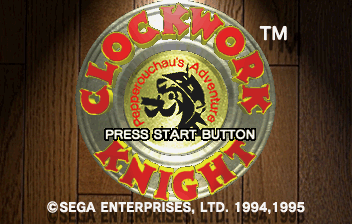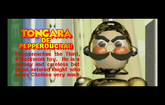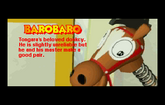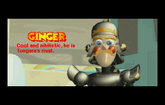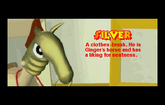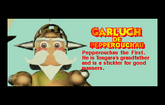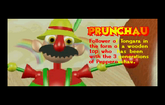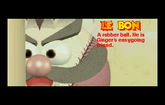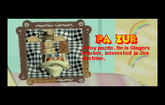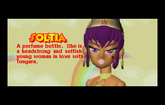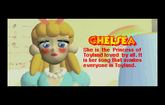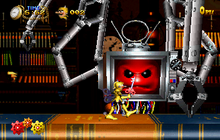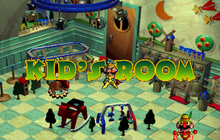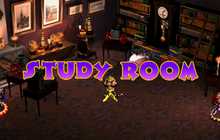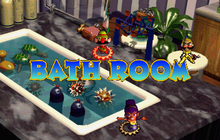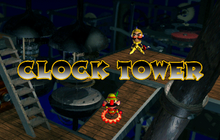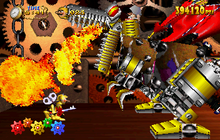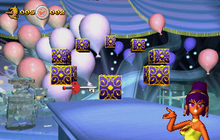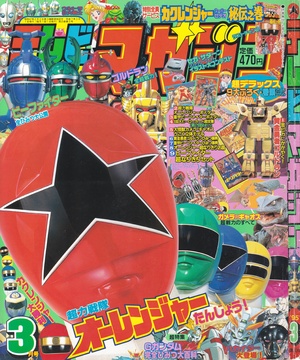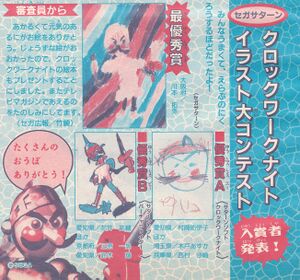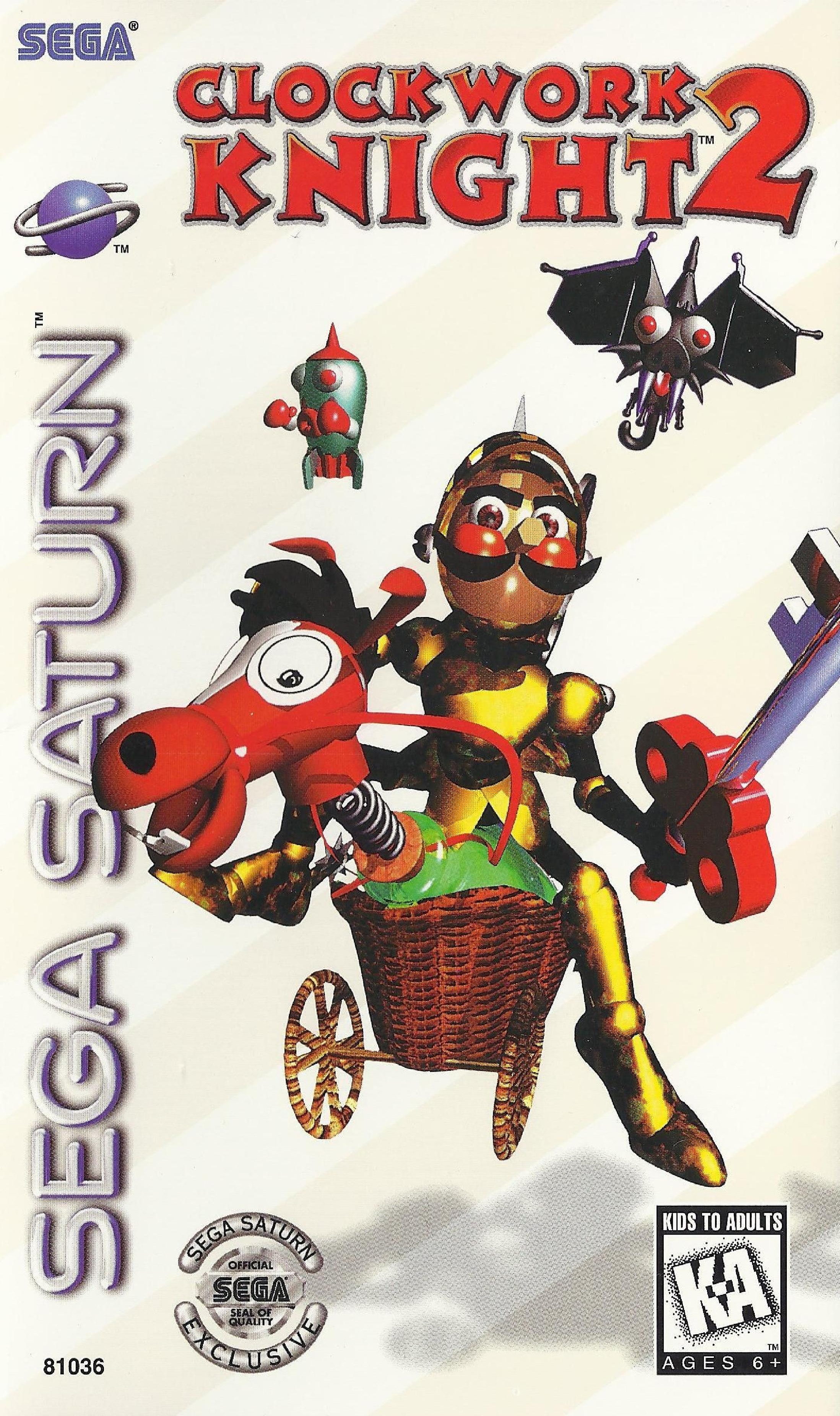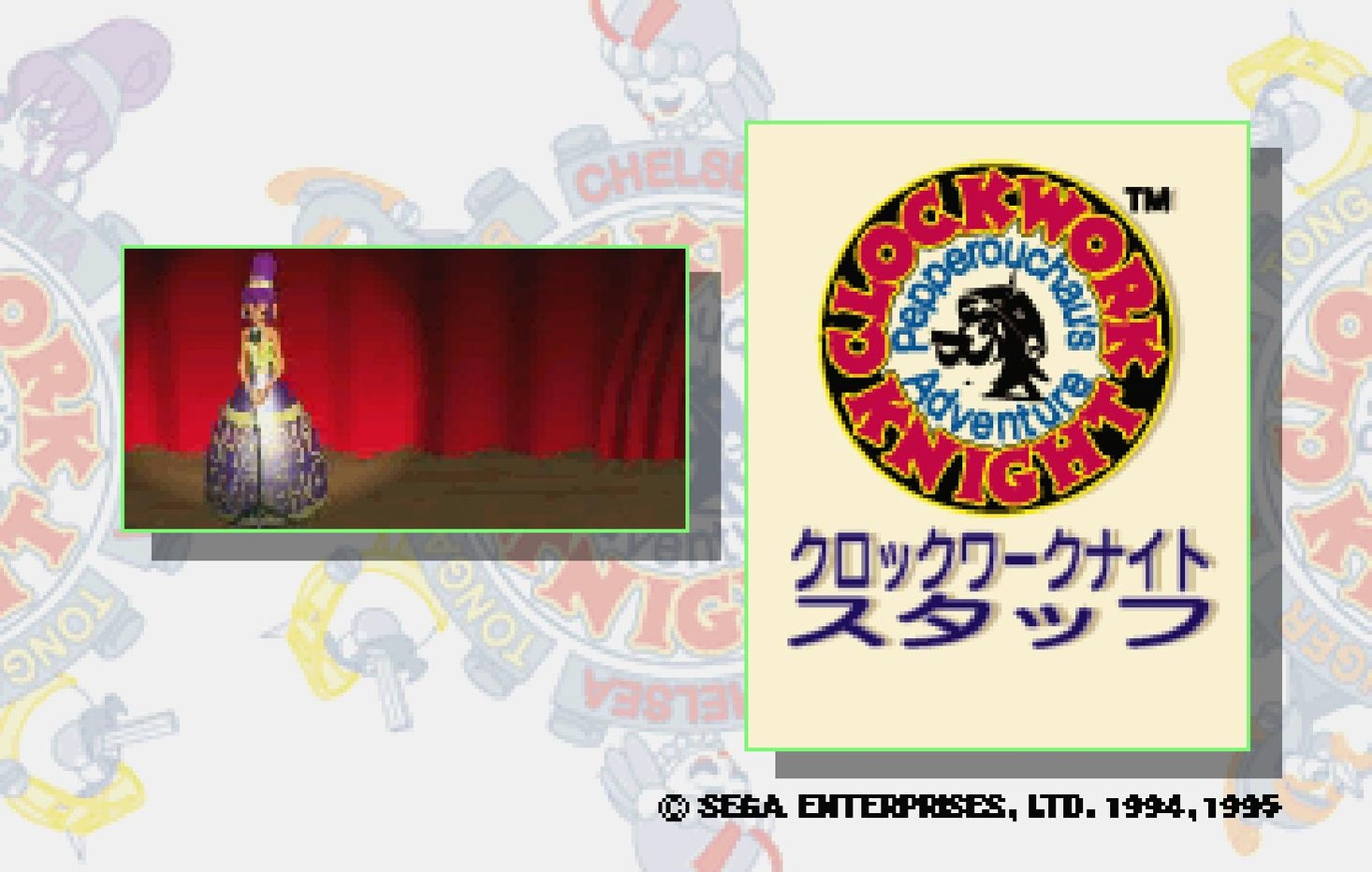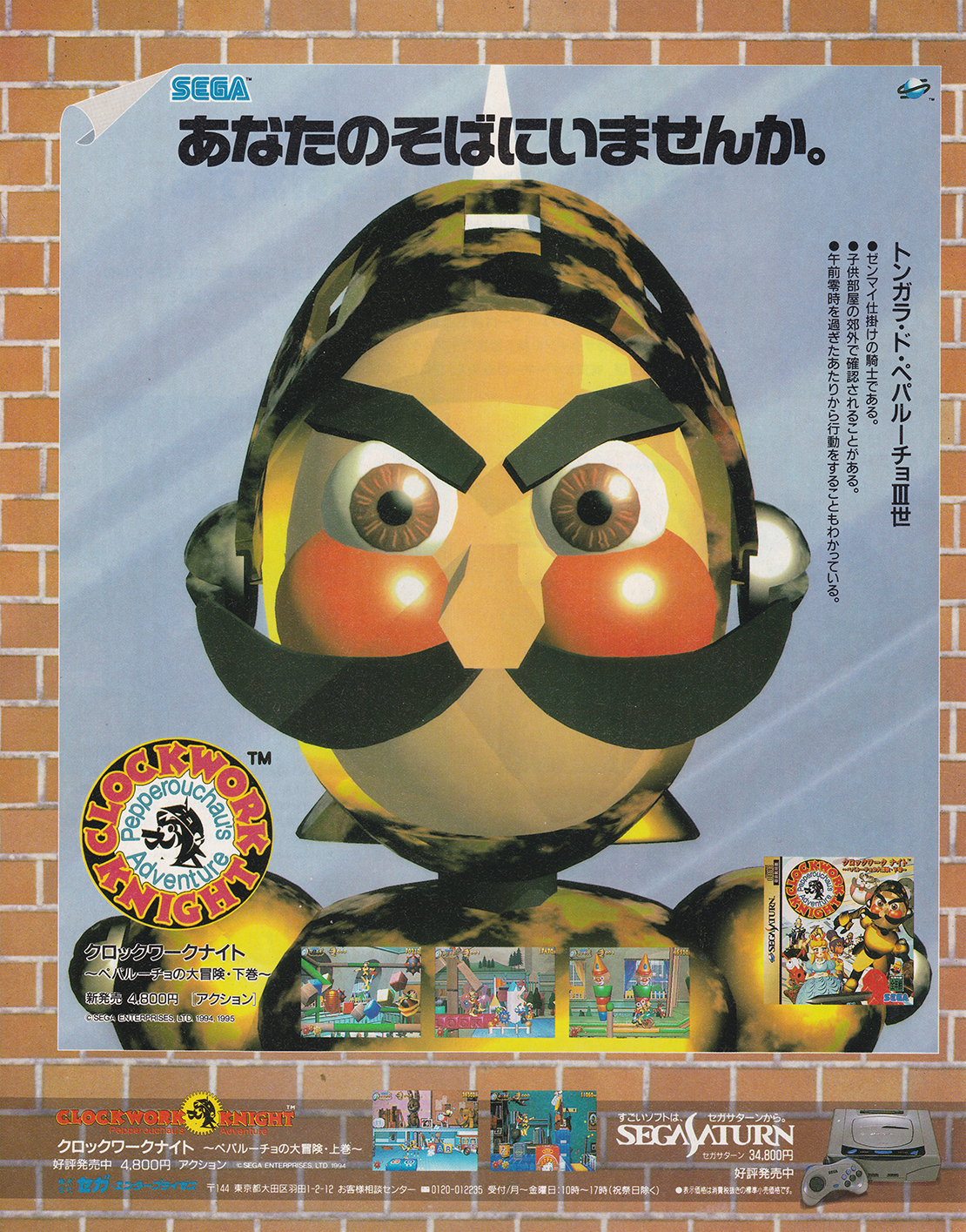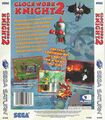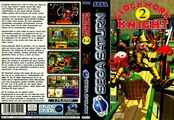Clockwork Knight 2
From Sega Retro
| Clockwork Knight 2 | |||||||||||||||||||||||||||||||||||
|---|---|---|---|---|---|---|---|---|---|---|---|---|---|---|---|---|---|---|---|---|---|---|---|---|---|---|---|---|---|---|---|---|---|---|---|
| System(s): Sega Saturn | |||||||||||||||||||||||||||||||||||
| Publisher: Sega | |||||||||||||||||||||||||||||||||||
| Developer: Sega CS | |||||||||||||||||||||||||||||||||||
| Sound driver: SCSP/CD-DA (1 track) | |||||||||||||||||||||||||||||||||||
| Genre: Action | |||||||||||||||||||||||||||||||||||
| Number of players: 1 | |||||||||||||||||||||||||||||||||||
| |||||||||||||||||||||||||||||||||||
Clockwork Knight 2, known as Clockwork Knight: Pepperouchau no Daibouken Gekan (クロックワークナイト ペパルーチョの大冒険 下巻) in Japan, is a side-scrolling platformer video game released for the Sega Saturn in 1995.
Contents
Story
The game focuses on Sir Tongara de Pepperouchau III ("Pepper" for short). He is the lovable (but clumsy) toy soldier (one of many in the house) that is owned by the members of the household. He is fiercely in love with the Clockwork Fairy Princess, Chelsea, whose voice wakes up the toys of the house, every night at midnight on the dot. However, his aforementioned clumsiness can sometimes make him something of a laughing stock, especially when compared to his friendly rival Ginger, who is also after Chelsea's heart.
However, as fate would have it, Chelsea was stolen away in the previous game by an unknown force, which had also hypnotised some of the lesser toys into fierce minions on a mission to stop anyone from rescuing her. Naturally, if there's no voice to wake them up anymore then the toys will never live again, so Pepper and Ginger head off to find Chelsea before it's too late.
The last game had a happy ending as they had found Chelsea, but there was one major unresolved problem; Chelsea was safe and sound, but wouldn't wake up! As the toys not under the spell ponder just what to do, the unknown force returns, dropping down and knocking our heroes off their feet, all while directing its minions to recapture Chelsea and take her deeper into the household. Ginger and Pepper quickly come up with the plan: Ginger will deal with the mysterious foe (or in the case of Ginger's story mode, what remains of the Crazy TV; which is still surprisingly somewhat active!), while Pepper himself continues on his quest to find Chelsea. Thus, the game begins again...
Characters
| Sir Tongara de Pepperouchau III ("Pepper") | |
|---|---|
| The main protagonist and sole playable character in the main game. He's brave, he's dashing, but he's also quite clumsy. At the end of the game not only does he save Chelsea but also finds his missing grandfather and marries Chelsea too. | |
| Barobaro | |
| Pepper's nearsighted but ever-faithful donkey-for-a-steed. Apparently he consists of a wine bottle on a wheeled basket. Pepper rides on his back in a few stages of the game. He also has a crush on Soltia... | |
| Sir Ginger | |
| Pepper's chief rival and something of a showoff, but works with him in saving Chelsea. At the end of the game he discovers from Pepper's grandfather that Chelsea is really his sister and that his key can wake her up again. He is also playable in US version. | |
| Silver | |
| Ginger's steed. A horse-shaped clothesbrush, he's quite snobby in thinking he's the perfect horse for the perfect warrior. | |
| Sir Oneon de Pepperouchau | |
| Pepper's father. He's a bit overly dramatic; he thinks, for whatever reason, that his family has forsaken him. | |
| Sir Garluch de Pepperouchau | |
| Pepper's highly-respected, if somewhat misguided, grandfather. It turns out he too was under the dark spell like the other lesser toys too. Pepper saves him at the end of the game after defeating the dragon boss along with Chelsea and tells his grandson that Ginger is really Chelsea's brother that only he can save her with his key. | |
| Prunchau | |
| Pepper's valet and close buddy, this top is also very consciencious of Pepper and sometimes treats him like a little boy. He leads the way in one segment of a level, and gives suggestions in the Soltian Roulette. | |
| Le Bon | |
| Ginger's valet. This bouncy ball will sometimes race Pepper in-game; succeeding gets you a Gold Key, while failing gets you a measly Imperial Crown. Like Prunchau, he also gives suggestions in the Soltian Roulette. | |
| Pa Zur | |
| Ginger's lord and mentor. All the toys think that the sliding puzzle is a wise old mystic. | |
| Soltia | |
| A hot-tempered perfume bottle who loves music, cards, and games of chance. She even has a big crush on Pepper himself, considering Chelsea to be a rival for his affection. She hosts the Soltian Roulette mini-game that occurs between worlds, also giving suggestions to players like Prunchau and Le Bon do. | |
| Clockwork Princess Chelsea | |
| This young, beautiful doll's voice has the power to wake all the toys every night at midnight. Both Pepper and Ginger compete for her heart. It is her kidnapping that sets both this and the prior game off. At the end its discovered that she and Ginger are brother and sister. She is awaken by her brother's key and then she marries Pepper. |
Gameplay
The Gameplay style and mechanics for Clockwork Knight 2 closely follows it's predecessor, Clockwork Knight. The game has fully 3D graphics, and doesn't just sit on that fact with numerous segments taking Pepper all over the back- and foregrounds, the paths sometimes having full 90° turns, and fully-polygonal bosses to fight.
But to mix up the fun, this game has various things that its predecessor lacks.
- There are 32 cards scattered around the game, four per level. Collecting all four cards in a level gives players a Gold Key; collecting all 32 gives them a secret code. Beyond that, the levels are fairly large, with numerous areas to check out and get the treasures out of, so exploration is anything but unadvised.
- There are also some horseback levels to keep things somewhat fresh. These are also 2D in nature, but in them Pepper is continuously going to the right on the back of his steed Barobaro. If one wants to collect something, then they'd have to be fairly quick about it as there would be no going backwards outside of Pepper committing suicide quickly to revive back at the beginning of the stage.
- Speckled eggs add as objects. Items are often found inside eggs.
Items
These items lying around for collection:
| Imperial Crowns | |
|---|---|
| Bottle caps with pictures of crowns on them, these are used in the Soltian Roulette mini-game or to earn a game continue. | |
| Pocket Watches | |
| Scattered around almost as much as Imperial Crowns, these award either one or five bonus seconds on the timer. | |
| Keys | |
| These wind-up keys will refill health. They come in three colors; Bronze Keys refill one point, Silver Keys refill all points, and Gold Keys refill all points and increase the maximum by one (this works twice per life, giving up to five hit points total). If Pepper is already at full health with five hit points, the gold key awards an extra life. | |
| Helmets | |
| A blue helmet awards an extra life, and the much-rarer red helmets award three extra lives. | |
| Pa-Zur Sphere (Invincible) | |
| This makes Pepper invincible for a short time. |
Levels
This game has fourteen levels, four different rooms with two normal levels and one boss each, plus a mini boss and a final boss. After finishing the boss level of a room 5/6/7, the player can play mini-game with Soltia, Prunchau and Le Bon.
| Study Room - Crazy TV (Mini Boss) | |
|---|---|
| A smaller, much easier version of the Crazy TV boss fight from the first game starts off the second. The artwork on the face of the TV is different to the version from the first game. This fight is semi-exclusive to the original Japanese and PAL releases of the game, and the only way to fight this version of the boss in the NTSC release is to enter a cheat code to play the game as the Knight known as Ginger. | |
| Kids' Room (Room 5) | |
| This is something of a playroom; tons and tons of colorful toys around, with large towers made of blocks and some race car tracks to ride Barobaro on. The boss is Funky Snaky, a rockin', floating snake made up of wooden blocks, a castanet and spiked balls with a microphone on the tip of its tail that doubles as its weak spot. It weaves around the tower Pepper is on, stopping to pose with the microphone up to its mouth every now and then. Most of the boss fights share this uniqueness to them, ranging from said snake to a piece of paper that morphs into various animals to an entire toy castle that's watched too many Transformers TV shows. | |
| Study Room (Room 6) | |
| After not finding Chelsea in the Kids' Room, the player makes their way back through the house via the Study Room. This is much jazzier than the prior room, not only in music but in tone as well. Things are much darker as you go about the candlelit desktops, opening and closing books and launching toy rockets at enemies in the background that you'd otherwise be facing later on. The boss is Paper Morphy, a page from a neglected book that likes to impersonate animals. The now completely destroyed "Crazy TV" boss can be seen in the background of this boss fight. | |
| Bath Room (Room 7) | |
| Moving back into bright areas for a while, most of this level is situated on or around the bath tub, with a few exceptions (such as one point where Pepper goes all the way up to the ceiling on the various plants hanging from it). Watch out for the hot water, it can really sting... The boss is Captain Octopus, a giant, soap-throwing pirate toy octopus. | |
| Clock Tower (Room 8) | |
| Gears, pipes and oily platforms abound up here, as the search for Chelsea nears its close. You can change the direction of how some things turn, but that may not always be beneficial... Plus, it being a tower, there's an awful lot of long drops to worry about. The boss is King Gears, a large castle that transforms into a cruel beast with powerful arms and the ability to dispense enemies onto the battlefield. | |
| Final Boss | |
| This stage can only be fought when playing it on Normal or Hard. This is the very end of the game - a final one-on-one battle with Garluch the Dragon, a behemoth of a creature composed of various bits (such as umbrellas, a teddy bear, and Pepper's grandpa!), who puts up a fierce fight in order to keep Chelsea. | |
| Soltian Roulette (Bonus stage) | |
| You bet your Imperial Crowns on the likelihood of your getting something from a roulette of various things (ranging from more Imperial Crowns, 1UPs, 3UPs, to Pierron faces, which gain you squat). After betting 5, 10 or 15 Imperial Crowns, the roulette boxes will reveal the contents (the amount of everything varies depending on how much you bet) then go for a quick spin, after which you choose which box you think has what you want. If you get something you can keep it, or spin again for a double-or-nothing round (this can be done four times, with the amount of doubles going down by one each time). It's certainly not a bad idea to play this, as the later levels can be pretty tricky. |
History
It is the sequel to Clockwork Knight, a launch title for the Sega Saturn that also was released in that year. Clockwork Knight 2 is often labeled as "Part 2", symbolising the fact they are essentially two halves of the same game. Both share much of the graphics and music and have identical gameplay. The original Clockwork Knight is often considered to be the lesser game, mostly due to the fact it was rushed to become a launch title. Clockwork Knight 2 had a much healthier development cycle, allowing for much improved graphics and levels set on Pepperouchau's steed, Barobaro.
There was a second sequel, Clockwork Knight: Pengin War, which never made it past the beta stage. Another possible sequel, titled Knight 'n Knight and scheduled to appear on the GameCube as an RPG, was never released.
Clockwork Knight Illustration Contest
Sometime in early 1995, during production of the game, it was decided that the "Clockwork Knight Illustration Contest (クロックワークナイト・イラストコンテスト)" would be held.
The game's producer Noriyoshi Oba would contact "Mr. Sahara (佐原氏)" from the Editorial Department of Japan's TV Magazine (テレビマガジン)[3][4], and the contest was first advertised on the front of the February 1995 (cover dated March 1995/1995.03) issue as "セガ・サターンクロックワークナイトイラスト大コンテスト"[5] and simply "クロックワークナイトイラスト大コンテスト" on the Contents Page.[6]
The basics of the competition were as follows:
Entries were to be drawn on the clear side of a plain postcard, and then the 2 little white address boxes with blue text included on the corresponding Magazine page were to be cut out and attached to the address side of the postcard. The entrants also had to pay 50 Yen (¥50) for postage costs.
As this was a contest, there were of course several prizes on offer. The prizes that were on offer were as follows[7]:
- Grand Prize (1 Winner Only) - Sega Saturn Console with controllers, etc.
- Prize A (3 Winners Only) - Clockwork Knight game for Sega Saturn.
- Prize B (3 Winners Only) - Virtua Fighter game for Sega Saturn.
(It is assumed that the Grand Prize would also come with a copy of each game)
Judging the entries were[7]:
- Noriyoshi Oba - Clockwork Knight Producer (大場 規勝 - クロックワークナイトプロデューサー)
- Murasaki Fumi - SEGA PR (村崎 史 - セガ広報)
- Ogawa Toru - Editor in Chief (小川 徹 - 本誌編集長)
The contest would ended on 1995.03.05, and the winners of the Contest were later announced in the 1995.05 issue of TV Magazine.
The winners of the competition were as follows:
- Grand Prize Winner: Takuya Kawamoto from Ōsaka Prefecture (大阪府/ 川本 拓弥)
- Prize A Top Winner: Yuiko Muraoka from Aichi Prefecture (愛知県/ (村岡 佑伊子)
- Prize A Other Winners: Asuka Kido from Saitama Prefecture (埼玉県/ 木戸 あすか) & Saori Nishimura from Hyōgo Prefecture (兵庫県/ 西村 沙織)
- Prize B Top Winner: Yūsuke Hanai from Aichi Prefecture (愛知県/ 花井 祐輔)
- Prize B Other Winners: Kazuaki Mihara from Kyōto Prefecture (京都府/ 三原 一晃) & Hikaru Suzuki from Aichi Prefecture (愛知県/ 鈴木 輝)
In addition to the prizes above, the winners of the contest also had their names and illustrations shown during the credits of the NTSC-J version of the game, along with a few others who didn't win.
Said illustrations, along with the names of the winners can be seen here.
The contest itself, "Mr. Sahara" and TV Magazine are mentioned by Noriyoshi Oba in the "README.DOC" file found on the Disc for the Japanese version of the game, which is discussed in the "Versions" section below. TV Magazine was also thanked as "テレビマガジン編集部のみなさん (TV Magazine Editorial Staff)" in the Japanese Version credits under the "Special Thanks" section.
Clockwork Knight "Trap Idea" Contest
File:SSM JP 19950601 1995-06.pdf Around 2 months before the initial Japanese release of the game, a contest was announced in the street dated 1995.06 issue of Sega Saturn Magazine (Japan) with a sense of "urgency"., looking for ideas for "Traps"/Enemies and Gimmicks for the then upcoming sequel.
The contest details remark on the fun use of 3D in the original game, such as the Doll Houses in Betsy's room that would fall onto the player or the toy locomotive that appeared in Kevin's Room, and that while there were already many such interesting things implemented in the new game, that it might also be fun to put the ideas of the readers into the game.
Readers were encouraged to send in as many different ideas as possible to a designated address (The Product Management Department's "Clockwork Knight Section" at SEGA of Japan's offices), and for their efforts, they had a chance of winning one of 10 copies of the game.
Given that the game was very much nearing it's final stages, a release was only a few months away, and as previously mentioned, the competition itself was presented with a sense of urgency, it was stated that any entries postmarked after 1995.06.07 would not be considered for the contest. Entrants also had to agree to only send in original/previously unused ideas, and that all industrial property rights, clothing rights and other clothing parental rights arising from the submitted ideas, sketches, etc. belong to SEGA ENTERPRISES CO., LTD. Minors were also required to attach a letter of parental consent along with their entry, otherwise it could not be accepted.
The competition details stated that results of the contest were set to be announced in a later issue of the magazine, but no fixed date was set for this at the time.
File:SSM JP 19951101 1995-11.pdf 5 months later, the the street dated 1995.11 issue of Sega Saturn Magazine (Japan) was released, and within it's pages the winners of the contest were finally announced.
The 10 winners were decided in two formats:
- Good Work (佳作): Ideas that were not actually used in the game, but that the game staff thought were pretty good ideas.
- Excellent Work (優秀作): Ideas that the game staff felt were so good that they were adopted into the game, either as is, or adapted to better suit the world of Clockwork Knight.
The following 5 ideas were the winners of the "Good Work" category:
- Choro-Q Finish by Takita Yūichi-San, Age 20 (「了チョロQ 」 - 滝田祐一さん, 20歳)
A mini toy car with a with coil-spring pullback motor is pulled backwards by Tongara, which he can then ride, and launches towards an enemy, sending the enemy flying towards the sky before exploding.
"SEGA" commented that they enjoyed the fact that the characteristics of the toy and the action of the tongara are inextricably engaged.
- Flower Pot by Sawada Shunsuke-San, Age 12 (「植木鉢」 - 沢田俊介さん, 12歳)
Water is added to a plant, and it grows rapidly until it becomes a huge ivy, with many large leaves. If you jump on this leaf and travel upwards, you'll find a shortcut to the back road and the goal.
"SEGA" commented that they found this idea to be particularly eye-catching, and were impressed with such a simple image.
- Household Resident gets up to use the Bathroom by Asami Hiroyuki-San, Age 21 (「住人、トイレで起きる」 - 朝見浩幸さん, 21歳)
The resident gets up in the middle of the night to use the Bathroom, and you must avoid being stepped on. If you are stepped on, then you will instantly die in one hit. Such small details are included by the resident being awoken by dim lights being accidently turned on by the player throughout the home.
"SEGA" commented that in terms of the impact of the idea itself,t his one was the best one. And that the idea of having the residents of the household appear in some form was a fine idea indeed.
In addition to the above three ideas, "Bamboo dragonfly; flying in the sky" by Sabihico Matsuyama (「竹とんぼ」 空を飛ぶ - 松山錆彦さん) and "The Harvest Cup; barrier" by Higashimoto Takehiko-san (「穫明カップ」 バリア - 東本岳彦さん) were also decided as "good works", but no information on them was presented.
File:SSM JP 19951101 1995-11.pdf
The following 5 ideas were the winners of the "Excellent Work Work" category:
- Turntable by Shimizu Noriya-San, Age 23 (「ターンテーブル」 - 清水典也さん, 23歳))
When the left switch is turned, the direction of the records rotation changes. There is also a switch on the right that turns the record player on and off, stopping the rotation completely. When the rotation stops, the BGM also stops. The stopped BGM fades back in once Tongara leaves the turntable.
"SEGA" commented how much they liked this idea, and how much it suited the world of Clockwork Knight. They really liked the idea that the rotation direction of the record can be changed by switching the switch, and so they incorporated this idea into the "detent" gears that appear in "Clock Tower".
- New Attack Method by Taguchi Isao-San, Age 24 (「新しい攻撃法 」 - 田口 勲さん, 24歳)
Using Tongara's key to hit enimies to clear other things, or allow access to other enimies and enemies he otherwise couldn't.
"SEGA" commented how much they really liked the idea, so they adaped it and used it in the Study Room with the Edwards in parts where you can break the floor to access parts you previously couldn't, and to please try it out.
- Cannon that can be operated Player 2 by Zero Pop-San, Age 21 (「2 Pが操作できる大砲」 - ゼロ・ポップさん, 25歳)
When Tongara reaches a certain place, a big arrow will appear in front of the screen. The original idea of this is for Player 2 to control the direction of this and decide where Tongara ends up.
"SEGA" commented how they like to use the scaling function of the Sega Saturn well, and that because of this the games artists utilised this person's idea in the large Study Room stages. They also made it so Tongara himself enters the canon without the need of assistance from Player 2, and they felt players will have fun using the cannons to switch between the front and back of the stage.
- Page Turning of Hell by Shimoshige Masaru-San, Age 24 (「地獄のページめくり」 - 下重 勝さん, 24歳)
The basic idea was to use books around the home to help the player progress. Ideas were given such as using a book that has been spread open as a foothold to reach a higher path, or running on the pages of an open book and turning them over to defeat enemies.
"SEGA" commented that the "Study Room" stage is filled with books, so this idea was perfect. Various book "traps and gimmicks" are waiting for the player to find in that stage, and to please try to find everything.
- Enemy Changing with Oragami by Ando Yuki-San, Age 18 (「折り紙で変化する敵」 - 安東雄起さん, 18歳)
The first form is a piece of paper that looks like origami and transforms into various shapes such as animals, etc, and it would come after you in these different forms one by one until defeated.
"SEGA" loved this idea so much that they used it without much revision for the Boss (Paper Morphy) of the "Study Room" stage, and commented how even though it's such a simple idea, it is a brilliant one that would be hard to come up with.
The contest itself, "Mr. Kondo" and 'Sega Saturn Magazine are mentioned by Noriyoshi Oba in the "README.DOC" file found on the Disc for the Japanese version of the game, which is discussed in the "Versions" section below. Sega Saturn Magazine was also thanked as "セガサターンマガジン編集部のみなさん (Sega Saturn Magazine Editorial Staff)" in the Japanese Version credits under the "Special Thanks" section.
Versions
The NTSC (US) version of Clockwork Knight 2 is based on Clockwork Knight: Pepperouchau no Fukubukuro with "Part 1" removed. As it is based on Fukubukuro, the game contains additional modes such as The Movies! and Bosses Galore, both of which are missing from the European and Japanese versions of the game.
One thing to be noted in the NTSC (US) version is that just like Fukubukuro, the "A Lullaby" ending video and even credits screens are missing, and after beating "Part 2", you are simply returned to the main title screen after being shown the ending video and the screen showing how many cards you collected during your play.
On a special note, the Disc for the Japanese version of the game contains an easter egg in the form of an .DOC file titled "README.DOC", which when viewed contains messages from the team that developed the game, all in Japanese. This file can be seen here.
Localised names
| Language | Localised Name | English Translation |
|---|---|---|
| English | Clockwork Knight 2 | Clockwork Knight 2 |
| English (US) | Clockwork Knight 2 | Clockwork Knight 2 |
| Japanese | クロックワークナイト ペパルーチョの大冒険 下巻 | Clockwork Knight: Pepperouchau no Daibouken Gekan |
Production credits
Clockwork Knight STAFF
- Executive Producer: Mamoru Shigeta
- Producers: Noriyoshi Oba, Yoji Ishii, Makoto Oshitani
- Director: Tomoyuki Ito
- Sound Director/Music Composer: Hirofumi Murasaki
- Main Character Artists: Toshiyuki Mukaiyama, Ryuichiro Kutsuzawa
- System Programmer/Main Character Programmer: Yoshio Fukushima
- Background Programmer/Visual Effect Programmer: Akira Ohe
- Front Stage Artists: Namie Manabe, Takehiko Miura, Yoshihito Takahashi
- Background Artists: Shiro Kinemura, Masahiro Sanpei, Osamu Ogata, Yumiko Miyabe
- Visual Coordination: Katsuhisa Sato
- Map Condstrction: Hiroshi Ohba
- Enemy Programmers/Trap Programmers: Takashi Amami, Toshihiro Aumazaki (Hitachi Microsoftware System. Inc.)
- Boss Enemy Programmers/Trap Programmers: Shinya Tsukizaki, Hiroaki Sakamoto, Tetsu Katano
- World Map & Goal Programmer: Hiroshi Momota
- Opening Programmer/Ending Programmer: Yoshio Inoue
- Bonus Game Programmer: Yuichi Matsuoka
- Boss Enemy Designer: Yusuke Yoshida
- Opening Artist/Ending Artist: Norihiro Nishiyama
- Graphical Supervisor: Masayuki Hasegawa
- Sound Effects: Seirou Okamoto, Katsuyoshi Nitta
- Sound Programmers: Kazuya Fujishima, Naomi Yamamoto, Kenichiro Okuma
- Sega Sound Libary: In Vision
- Recording Studio: Sega Digital Studio
- Recording Producer: Tatsutoshi Narita
- Recording Director: Fumitaka Shibata
- Recording Engineer: Naoyuki Machida
- Product Manager: Tomoaki Ogawa, Kazuhiro Hanaya
- Promotion: Tadashi Takezaki
- Special Thanks: Toru Sasaki, Tsutomu Kataoka, Asami Sasaki, Shinji Kawahira, Yosuke Okunari, Tomoko Hasegawa
- Produced & Published By: Sega Enterprises. Ltd.
- Opening Theme: Salsa de Pepperouchau -Fiesta de los Amigos-
- Vocals By: Misumi Kosaka, Tomoko Tsuyama
- Words By: Reiko Waters
- Music By: Hirofumi Murasaki
- Arranged By: Tomoko Tsuyama
- Manipulated By: Nobuo Ito
- Title Theme: Pretty Please Boogie
- Vocals By: Misumi Kosaka, Tomoko Tsuyama
- Words By: Reiko Waters
- Music By: Hirofumi Murasaki
- Arranged By: Tomoko Tsuyama
- Manipulated By: Nobuo Ito
- Credits Theme: A Lullaby
- Vocals By: Misumi Kosaka
- Words By: Reiko Waters
- Music By: Hirofumi Murasaki
- Arranged By: Tomoko Tsuyama
- Manipulated By: Nobuo Ito
SEGA Of America Credits[8]
- Producer: Dante Anderson
- Product Manager: Sarah Mason Richmond
- Lead Tester: Kim Rogers
- Special Thanks: Steve Apour, Tim Dunley, Jef Feltman, Jeff Loney, Larry Loth, Eric Rawlins, Max Taylor
Credits from US Manual
- Producer: Dante Anderson
- Assistant Producer: Kim Rogers
- Assistant Lead Testers: Nicole Tatem, Dan Tyrrell, Stephen Wong
- Testers: Darin Jonhston, Jeff Sanders, David Wood, Rebecca Colbourn, Alan Coe, Brenden Cahill, Noah MacKenzie, John Lencioni, Rick Greer, Chris Towles, Lloyd Kinoshita
- CD Lounge: Jef Feltman, Larry Loth
- Product Manager: Sarah Richmond, Lisa Wilson
- Product Manager (Japan): James Spahn
- Manual: Wendy Dinsmore
- Special Thanks: Steve Apour, Eric Rawlins, Max Taylor, Steve Payne, Mark Lindstrom, Mike Latham, Seth Gerson, Joyce Takakura, Eric Quakenbush, Eddie Vee, Tim "angry-man" Dunley, Mike Williams, Enos Bytes, Clint Dyer, Sarah Wittmer, Lorene Goble, Terry Tang
Japanese version
クロックワークナイト・イラストコンテスト[10] [11][12]
- 大阪府: 川本 拓弥くん - 4才
- 愛知県: 村岡 佑伊子ちゃん - 3才
- 埼玉県: 木戸 あすかちゃん - 8才
- 兵庫県: 西村 沙織ちゃん - 11才
- 愛知県: 花井 祐輔くん - 5才
- 京都府: 三原 一晃くん - 6才
- 愛知県: 鈴木 輝くん - 14才
- 兵庫県: 小林 知恵ちゃん - 11才
- 長野県: 神林 広樹くん - 5才
- 福岡県: 高山 じゅんやくん - 5才
- 富山県: 大坪 和馬くん - 6才
- 兵庫県: 西村 美那子ちゃん - 14才
- 新潟県: 高橋 ふみのりくん - 8才
- 愛知県: 野本 かずのりくん - 7才
- 北海道: 泉 竜太くん - 4才
クロックワークナイト スタッフ
- エクゼクティブ・プロデューサー: 重田 守
- プロデューサー: 石井 洋児
- テクニカル・ディレクター: 浅井 敏典
- アート・プロデューサー: 田中 江
- 企画: 遠藤 智三, 佐藤 勝久, 吉田 雄介
- グラフィックデザイナー: 向山 俊行, 西山 宗弘, 真鍋 奈見江, 三浦 岳彦, 緒方 修
- プログラマー: 福島 淑生, 大江 玲, 松岡 雄一, 井上 善央, 河合 健治, 着崎 信也, 片野 徹, 堀田 泰丸, 藤下 豪人
- サウンド: 村崎 弘史
- サウンド・プログラム: 小原 孝浩, 山本 尚美, 藤島 一哉, 大熊 建一郎
- レコーディング・スタッフ: 成田 尊, 柴田 文孝, 町田 直幸, 佐々木 亨 (Triad Project), 村岡 浩樹 (Studio-J), 森高 紀幸 (Studio-J), 小松 美穂 (Triad Project), 佐々木 麻美 (Triad Project), 佐々木 佳子 (Triad Project)
- 作詞: レイコ・ウォーターズ
- 作曲: 村崎 弘史
- 編曲: 奥山 勝
- 作詞: レイコ・ウォーターズ
- 作曲: 村崎 弘史
- 編曲: 奥山 勝
- 作詞: 村崎 弘史
- 作曲: 津山 智子
- 作詞: レイコ・ウォーターズ
- 作曲: 村崎 弘史
- 編曲: 津山 智子
- 演奏・ペパルーチョ楽団: 小坂 水澄, 奥山 勝, 伊藤 寛康, 佐久間 勲, 菊地 成浩, 相川 等, 鈴木 亜由美, 美座 良彦, 福本 雅之, 佐藤 英樹, 谷口 吉美, 松田 靖宏, 設楽 圭二, 上月 洋也, 松本 孝浩, 伊藤 信雄, 津山 智子
- ビジュアル・スタッフ: 石坂 郁夫, 丸山 利明, 熊谷 秀大
- マニュアル: 三井 弘幸, 作田 喜尋, 中里 治
- マーケティング・スタッフ: 川越 隆幸, 小川 智章, 竹崎 忠, 船田 晃, 服部 浩二, 南雲 靖士, 細井 貴志, 花谷 和宏, 菊地 博人, 奥成 洋輔
- スペシャル・サンクス: 熊崎 敏啓, 天見 卓志, 沓沢 龍一郎, 高橋 良仁, 岩出 敬, ジェイムス スパーン, 新田 勝貴, 岡元 清郎, 西川 彰, 藤村 弘之, 寺沢 彰, セガサターンマガジン編集部のみなさん, テレビマガジン編集部のみなさん, 週刊ファミ通編集部のみなさん
- 友情出演(ゲームカタログII): 中山 博子
- テクニカル・ディレクター: 庄司 卓
- ディレクター: 伊藤 知行
- プロデューサー: 大場 規勝
- Sega Sound Library by: InVision Interactive
Magazine articles
- Main article: Clockwork Knight 2/Magazine articles.
Promotional material
Physical scans
| 78 | |
|---|---|
| Based on 41 reviews | |
| Saturn, BR |
|---|
|
Technical information
ROM dump status
| System | Hash | Size | Build Date | Source | Comments | |||||||||
|---|---|---|---|---|---|---|---|---|---|---|---|---|---|---|
| ✔ |
|
328,960,128 | CD-ROM(EU) | MK81021-50 V1.001 | ||||||||||
| ✔ |
|
329,136,528 | 1995-07-05 | CD-ROM(JP) | GS-9029 V1.001 | |||||||||
| ? |
|
450,043,440 | CD-ROM(US) | 81036 V1.000 | ||||||||||
| ? |
|
1995-08-30 | Page |
Track list
NTSC-J/PAL Ver.
| 1. [data track] |
|---|
| 2. Pretty Please Boogie - Game Mix (03:47) |
|---|
| From: Title Theme |
NTSC-U Ver.
| 1. [data track] |
|---|
| 2. Pretty Please Boogie - Game Mix (03:49) |
|---|
| 3. Clockwork Knight (Reprise) - Game Mix (00:44) |
|---|
Save data
The NTSC-U version of the game makes use of the Saturn's internal battery back-up to save data for system configuration.
| Name | Comment | File Size |
|---|---|---|
| CLOCK__DATA | クロックワークナイト | 1 |
Extra content
This game has extra content which can be viewed when accessing the disc on a PC.
| Folder / File | Type | Size | description |
|---|---|---|---|
| README.DOC | TXT | 16,087 | Messages from the developers. Exclusive to the NTSC-J version. |
External links
- Sega of Japan catalogue page (Japanese): Sega Saturn
References
- ↑ GamePro, "March 1996" (US; 1996-xx-xx), page 44
- ↑ GamePro, "March 1996" (US; 1996-xx-xx), page 60
- ↑ TV Magazine info on Japan Wikipedia
- ↑ TV Magazine info on Transformers Wiki
- ↑ The cover dated 03.1995 issue of "TV Magazine" advertising the Clockwork Knight Illustration contest.
- ↑ Contents page of the cover dated 03.1995 issue of "TV Magazine" advertising the Clockwork Knight Illustration contest.
- ↑ 7.0 7.1 Competition page with prize, entry and judge information of the cover dated 03.1995 issue of "TV Magazine" advertising the Clockwork Knight Illustration contest.
- ↑ YouTube video of Clockwork Knight 2 PAL Version Credits.
- ↑ File:Clockworkknight2 sat us manual.pdf, page 22
- ↑ YouTube video of Clockwork Knight 2 NTSC-J Version Credits.
- ↑ Clockwork Knight ~Pepperochau no Daibouken - Gekan~ Staff Credits from http://raido.moe.
- ↑ Clockwork Knight 2 Credits from MobyGames.
- ↑ File:Clockworkknight2_Saturn_JP_SSEnding.pdf
- ↑ 14.0 14.1 Consoles +, "Décembre 1995" (FR; 1995-1x-xx), page 172
- ↑ Computer & Video Games, "November 1995" (UK; 1995-10-13), page 44/45 (44)
- ↑ 16.0 16.1 Electronic Gaming Monthly, "April 1996" (US; 1996-xx-xx), page 34
- ↑ Electronic Gaming Monthly, "1998 Video Game Buyer's Guide" (US; 1997-11-11), page 83
- ↑ Joypad, "Septembre 1995 (Joypad International supplement)" (FR; 1995-0x-xx), page 28/29 (28)
- ↑ 19.0 19.1 Joypad, "Décembre 1995" (FR; 1995-1x-xx), page 84
- ↑ 20.0 20.1 Maximum, "November 1995" (UK; 1995-11-xx), page 145
- ↑ Mean Machines Sega, "October 1995" (UK; 1995-08-25), page 58-61 (58)
- ↑ 22.0 22.1 Mean Machines Sega, "December 1995" (UK; 1995-10-30), page 92
- ↑ Player One, "Décembre 1995" (FR; 1995-1x-xx), page 94-97 (94)
- ↑ Sega Saturn Magazine, "November 1995" (UK; 1995-10-26), page 60/61 (60)
- ↑ Sega Saturn Magazine, "September 1995" (JP; 1995-08-08), page 163 (165)
- ↑ Sega Saturn Magazine (readers), "Final data" (JP; 2000-03), page 12 (14)
- ↑ Última Generación, "Octubre 1995" (ES; 1995-xx-xx), page 82/83 (83)
- ↑ Ultimate Gamer, "November 1995" (US; 1995-1x-xx), page 72-73 (72)
- ↑ CD Consoles, "Septembre 1995" (FR; 1995-09-08), page 94
- ↑ Consoles +, "Septembre 1995" (FR; 1995-0x-xx), page 136
- ↑ Computer & Video Games, "November 1995" (UK; 1995-10-13), page 44
- ↑ Famitsu, "1995-08-04" (JP; 1995-07-21), page 1
- ↑ Fun Generation, "06/95" (DE; 1995-0x-xx), page 60
- ↑ GameFan, "Volume 3, Issue 9: September 1995" (US; 1995-xx-xx), page 16
- ↑ Game Players, "Vol. 9 No. 4 April 1996" (US; 1996-03-19), page 64
- ↑ GamePro, "April 1996" (US; 1996-xx-xx), page 78
- ↑ Gamers, "Dezember 1995" (DE; 1995-11-08), page 50
- ↑ Game Informer, "March 1996" (US; 1996-0x-xx), page 48
- ↑ Gry Komputerowe, "11/1996" (PL; 1996-xx-xx), page 1
- ↑ Hobby Consolas, "Diciembre 1995" (ES; 1995-xx-xx), page 120
- ↑ Joypad, "Septembre 1995 (Joypad International supplement)" (FR; 1995-0x-xx), page 28
- ↑ MAN!AC, "10/95" (DE; 1995-09-13), page 64
- ↑ Mega Force, "Décembre 1995" (FR; 1995-1x-xx), page 80
- ↑ Mega Fun, "11/95" (DE; 1995-10-18), page 82
- ↑ Mean Machines Sega, "October 1995" (UK; 1995-08-25), page 58
- ↑ Next Generation, "November 1995" (US; 1995-10-24), page 172
- ↑ Player One, "Décembre 1995" (FR; 1995-1x-xx), page 94
- ↑ Saturn Fan, "1995 October" (JP; 1995-09-08), page 64
- ↑ Saturn+, "Christmas 1995" (UK; 1995-12-14), page 65
- ↑ Sega News, "Leden 1997" (CZ; 1997-xx-xx), page 23
- ↑ Sega Power, "November 1995" (UK; 1995-09-21), page 45
- ↑ Sega Pro, "October 1995" (UK; 1995-09-07), page 48
- ↑ Świat Gier Komputerowych, "10/1996" (PL; 1996-xx-xx), page 1
- ↑ Sega Saturn Magazine, "November 1995" (UK; 1995-10-26), page 60
- ↑ Sega Saturn Magazine, "September 1995" (JP; 1995-08-08), page 165
- ↑ Sega Saturn Magazine, "Readers rating final data" (JP; 2000-03), page 14
- ↑ Strana Igr, "May/Iyun 1996" (RU; 1996-xx-xx), page 131
- ↑ Todo Sega, "Diciembre 1995" (ES; 1995-1x-xx), page 48
- ↑ Total Saturn, "Volume One Issue Four" (UK; 1996-12-29), page 17
- ↑ Ultimate Future Games, "October 1995" (UK; 1995-09-01), page 86
- ↑ Ultimate Gamer, "November 1995" (US; 1995-1x-xx), page 72
- ↑ Última Generación, "Octubre 1995" (ES; 1995-xx-xx), page 82
- ↑ Video Games, "9/95" (DE; 1995-08-30), page 94
- ↑ VideoGames, "April 1996" (US; 1996-03-19), page 62
| Clockwork Knight 2 | |
|---|---|
|
Main page | Comparisons | Hidden content | Magazine articles | Reception
| |
| Clockwork Knight series of games | |
|---|---|
| Clockwork Knight (1994) | Clockwork Knight 2 (1995) | Clockwork Knight: Pepperouchau no Fukubukuro (1995) | Clockwork Knight: Pengin War (Cancelled) | |
| Knight'n Knight (Cancelled) | |
| Sampler Discs | |
| Clockwork Knight Sample (1994) | Prime Selection Vol. 1 (1995) | |
| Clockwork Knight related media | |
| Clockwork Knight: Pepperouchau no Daibouken Fantastic Soundtrack (1995) | Israelites (1996) | |
| Clockwork Knight: Pepperouchau no Daibouken (1994) | Clockwork Knight: Pepperouchau no Daibouken Joukan Koushiki Guide Book (1995) | Clockwork Knight: Pepperouchau no Daibouken Gekan Koushiki Guide Book (1995) | |
- 1 player games
- JP Saturn games
- All JP games
- US Saturn games
- All US games
- EU Saturn games
- All EU games
- PT Saturn games
- All PT games
- PL Saturn games
- All PL games
- BR Saturn games
- All BR games
- Saturn games
- 1995 Saturn games
- All 1995 games
- Saturn action games
- All action games
- Old content rating field
- All games
- Bad translation
- Credits without source
- Credits without reference
- Creditstable with no console field
- Bad external reference
- Old-style rating (consolesplus)
- Old-style rating (cvg)
- Old-style rating (egm)
- Old-style rating (egmbuyersguide)
- Rating without PDF source
- Old-style rating (famitsu)
- Old-style rating (joypad)
- Old-style rating (maniac)
- Rating without source
- Old-style rating (maximum)
- Old-style rating (mms)
- Old-style rating (playerone)
- Old-style rating (segapower)
- Old-style rating (segapro)
- Old-style rating (ssm)
- Old-style rating (ssmjp)
- Old-style rating (ssmjp r)
- Old-style rating (ultimageneracion)
- Old-style rating (ug)
- Update ratings template
- 20 old ratings
- Missing ROM hashes
- Games with known prototypes
- Old technical information
- Track missing credits
- Saturn games with bonus PC content
- Clockwork Knight 2
- Clockwork Knight (franchise)
